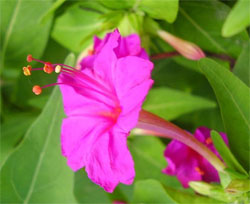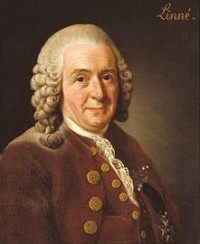Here’s a novel way to create your own timepiece – if you have a garden!

Mirabilis jalapa – The Four O’Clock flower
In 1751, Swedish botanist Carolus Linnaeus suggested that by planting flowers which open and close at different times of the day in a particular pattern, you could tell the time just by observing the petals.
Plants have biological clocks which are linked to the circadian rhythm that regulates processes such as metabolism, release of fragrances and movement – which is roughly based on 24-hour intervals.
Linnaeus’ theory was published in Philosophia Botanica where he also described three groups of flowers:
- Meteorici – flowers which change their opening and closing times according to the weather conditions
- Tropici – flowers which change their times for opening and closing according to the length of the day
- Aequinoctales – flowers which have fixed times for opening and closing (unaffected by the weather conditions)
Linnaeus himself never got to plant a flower clock but some botanical gardeners in the early 19th Century would often arrange plants in a circle to form the clock face of the flowerbed, which was divided into 12 segments to represent the hours of each day. Each segment was then planted with flowers that opened or closed within that hour of time.
Here are some examples of plants and their opening and closing times:

Carolus Linnaeus (1707-1778)
6 a.m. Spotted Cat’s Ear, Flax
7 a.m. African Marigold, Lettuce
8 a.m. Mouse-Ear Hawkweed, Scarlet Pimpernel, Dandelion
9 a.m. Calendula, Catchfly, Prickly Sow
10 a.m. California Poppies
11 a.m. Star of Bethlehem
Noon Goatsbeard, Blue Passion Flowers, Morning Glories
1 p.m. Carnation, Childing Pink
2 p.m. Afternoon Squill, Poppy
3 p.m. Calendula closes
4 p.m. Purple Hawkweed, Four O’Clocks, Cat’s Ear
5 p.m. Night Flowering Catchfly, Coltsfoot
6 p.m. Moonflowers, White water lily
7 p.m. White Campion, Daylily
8 p.m. Night Flowering Cereus, Catchfly
The accuracy of the flower clock will be affected by weather changes, seasons and location – so although it would look pretty impressive in your garden, it’s probably wise to not throw away your watch just yet!
